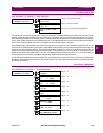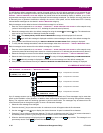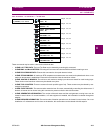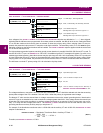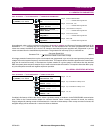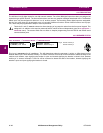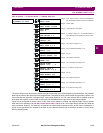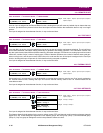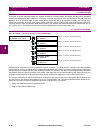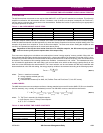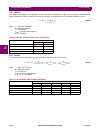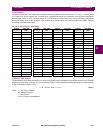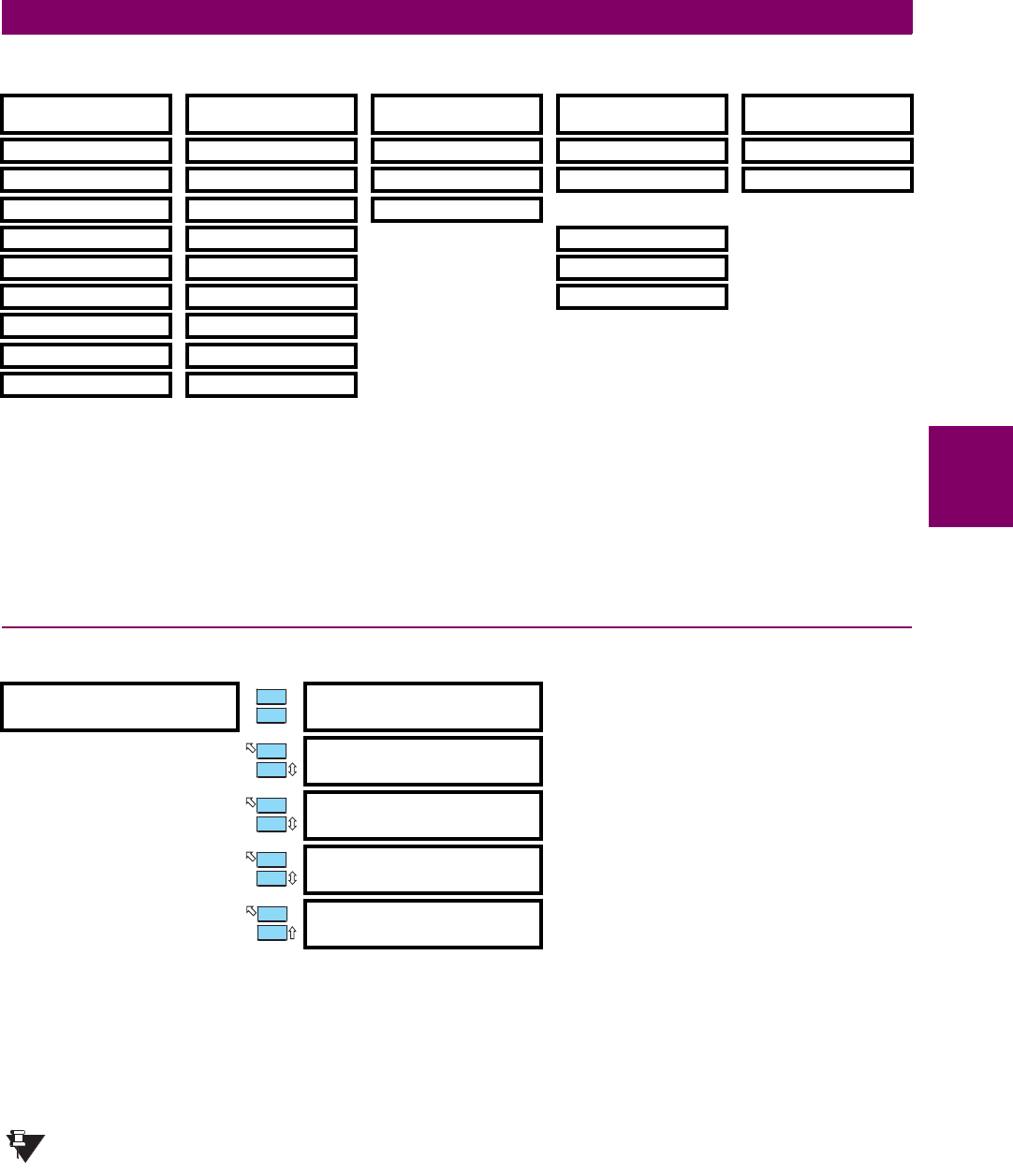
GE Multilin 489 Generator Management Relay 4-17
4 SETPOINTS 4.4 S3 DIGITAL INPUTS
4
The following chart illustrates the Group 2 (alternate group) setpoints
The active group can be selected using the
ACTIVATE SETPOINT GROUP setpoint or the assigned digital input (shorting that
input will activate the alternate set of protection setpoints, Group 2). In the event of a conflict between the ACTIVATE SET-
POINT GROUP setpoint or the assigned digital input, Group 2 will be activated. The LED indicator on the faceplate of the 489
will indicate when the alternate setpoints are active in the protection scheme. Changing the active setpoint group will be
logged as an event. Independently, the setpoints in either group can be viewed and/or edited using the
EDIT SETPOINT
GROUP setpoint. Headers for each setpoint message subgroup that has dual settings will be denoted by a superscript num-
ber indicating which setpoint group is being viewed or edited. Also, when a setpoint that has dual settings is stored, the
flash message that appears will indicate which setpoint group setting has been changed.
4.4.8 SEQUENTIAL TRIP
PATH: SETPOINTS ÖØ S3 DIGITAL INPUTS ÖØ SEQUENTIAL TRIP
During routine shutdown and for some less critical trips, it may be desirable to use the sequential trip function to prevent
overspeed. If an input is assigned to the sequential trip function, shorting that input will enable either a low forward power or
reverse power function. Once the measured 3-phase total power falls below the low forward power level, or exceeds the
reverse power level for the period of time specified, a trip will occur. This time delay will typically be shorter than that used
for the standard reverse power or low forward power elements. The level is programmed in per unit of generator rated MW
calculated from the rated MVA and rated power factor. If the VT type is selected as None, the sequential trip element will
operate as a simple timer. Once the input has been shorted for the period of time specified by the delay, a trip will occur.
The minimum magnitude of power measurement is determined by the phase CT minimum of 2% rated CT primary.
If the level for reverse power is set below that level, a trip or alarm will only occur once the phase current exceeds
the 2% cutoff.
Users are cautioned that a reverse power element may not provide reliable indication when set to a very low setting, partic-
ularly under conditions of large reactive loading on the generator. Under such conditions, low forward power is a more reli-
able element.
2 S5 SETPOINTS
CURRENT ELEMENTS
2 S6 SETPOINTS
VOLTAGE ELEMENTS
2 S7 SETPOINTS
POWER ELEMENTS
2 S8 SETPOINTS
RTD TEMPERATURE
2 S9 SETPOINTS
THERMAL MODEL
2 OVERCURRENT ALARM 2 UNDERVOLTAGE 2 REACTIVE POWER 2 RTD TYPES 2 MODEL SETUP
2 OFFLINE O/C 2 OVERVOLTAGE 2 REVERSE POWER 2 RTD #1 2 THERMAL ELEMENTS
2 INADVERTENT ENERG. 2 VOLTS/HERTZ 2 LOW FORWARD POWER ↓
2 PHASE OVERCURRENT 2 PHASE REVERSAL 2 RTD #12
2 NEGATIVE SEQUENCE 2 UNDERFREQUENCY 2 OPEN RTD SENSOR
2 GROUND O/C 2 NEUTRAL O/V (Fund) 2 RTD SHORT/LOW TEMP
2 PHASE DIFFERENTIAL 2 NEUTRAL O/V (3rd)
2 GROUND DIRECTIONAL 2 LOSS OF EXCITATION
2 HIGH-SET PHASE O/C 2 DISTANCE ELEMENT
SEQUENTIAL TRIP
[ENTER] for more
ASSIGN DIGITAL
INPUT: None
Range: None, Input 1 to Input 7. If an input is assigned to
the Tachometer, it may not be used here.
SEQUENTIAL TRIP TYPE
Low Forward Power
Range: Low Forward Power, Reverse Power
ASSIGN TRIP
RELAYS (1-4): 1---
Range: Any combination of Relays 1 to 4
SEQUENTIAL TRIP
LEVEL: 0.05 x Rated MW
Range: 0.02 to 0.99 × Rated MW in steps of 0.01
SEQUENTIAL TRIP
DELAY: 1.0 s
Range: 0.2 to 120.0 s in steps of 0.1
ENTER
ESCAPE
ð
ð
MESSAGE
ESCAPE
MESSAGE
ESCAPE
MESSAGE
ESCAPE
MESSAGE
ESCAPE
NOTE



